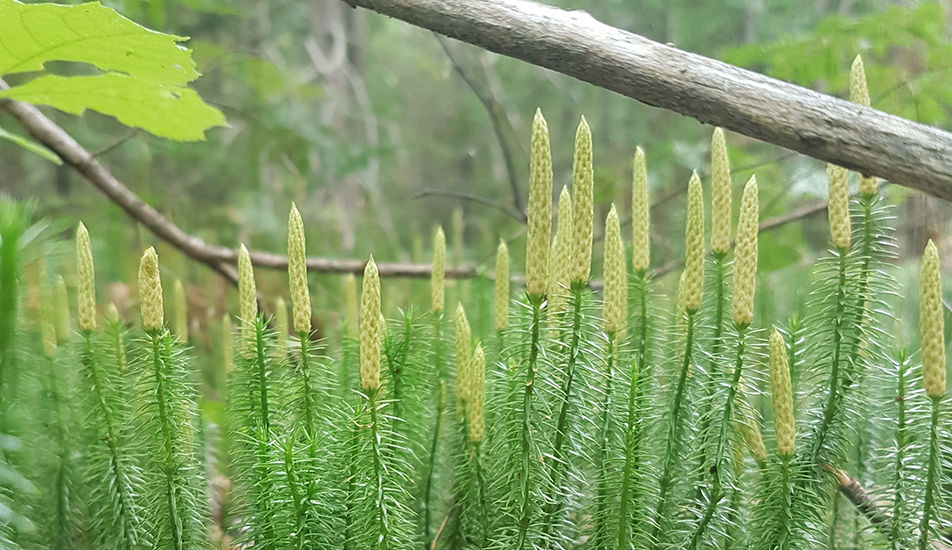Ontario Nature Blog
Receive email alerts about breaking conservation
and environmental news.
© Lora Denis
Malcolm Bluff Shores Nature Reserve © Joe Crowley
As Ontario species tuck in for the long winter, our staff have returned from the field to the comfort of their home offices. The field season got off to a bumpy start this year, with the COVID-19 lockdown closing our nature reserves. But we were up to speed by July and visited many of our nature reserves to conduct Annual Inspections and visit with our volunteer stewards. Each year as part of our stewardship, we visit each of the reserves and record any species we see, monitor and maintain the trails (if there are trails on the property), and make note of anything that has changed since our last visit.
An area we are always excited to visit is the beautiful Saugeen Bruce Peninsula! Six of our nature reserves are on this peninsula, located between Georgian Bay and the main basin of Lake Huron. It represents some of the province’s most vulnerable and spectacular habitats including Great Lakes Shorelines with globally unique forests, dunes, wetlands, and alvars (rare ecosystems of limestone or dolostone that are home to distinctive plants and animals, such as lakeside daisy, which are threatened by development and climate change).
Over the course of our 2020 field season, our team made a whirlwind visit of our nature reserves on the Saugeen Bruce Peninsula and we have plenty to share including rare species and stunning views.

This 423-hectare property is located on the Niagara Escarpment on the north shore of Colpoys Bay, an embayment of Georgian Bay. It includes four kilometres of undeveloped Great Lakes shingle beach shoreline as well as an unbroken expanse of forested land.

Two different visits to the property in July and September resulted in seeing a multitude of species including Hart’s tongue fern (a species of special concern), bear scat, and a male singing cerulean warbler (a species listed as endangered). These were very exciting things to see as the bear population in the Saugeen Bruce Peninsula is small and genetically distinct from other black bear populations in Ontario. Additionally, the last cerulean warbler observed on the property was three years ago. In September, many fern species and fungi were seen on the trail. We observed species including spinulose wood fern, rattlesnake fern, maidenhair spleenwort, bulblet fern, violet coral fungus, and American cancer-root. Due to a downpour of rain in the days prior to the visit, mushrooms were abundant!

Located on the shores of Lake Huron, this six-hectare nature reserve encompasses stunning and diverse scenery – from open jack pine forest to globally significant alvar habitat.
This September, we conducted an annual inspection and snake surveys finding three adult gartersnakes basking closely together. We also observed many leopard frogs and several green frogs.

This 61-hectare nature reserve has two main vegetation communities that gently grade into each other – rock barrens covered with moss and herbaceous plants such as lakeside daisy, and semi-open coniferous forests. The rock barrens have little or no brush or tree cover. Plants that survive on these rock barrens are adapted to extreme conditions including freezing cold in winter and searing hot and dry in the summer.

On our visit, we saw Massasauga rattlesnakes, eastern gartersnake and red-backed salamanders.

This property is an orchid-lovers paradise! At 33-hectares, Petrel Point Nature Reserve is a spectacular example of Great Lakes Coastal Meadow Marsh, a globally rare habitat. Slight changes in elevation in the wetland separate distinct communities of plants.

Each year, we conduct orchid surveys on this property. In July, species such as Rose Pogonia, Pitcher plant, slenderleaf sundew, shrubby cinquefoil, swamp candles and sticky false asphodel were observed. On a September visit, we observed an abundance of fen species such as fringed gentian, nodding ladies tresses, false sticky asphodel, grass of Parnassus and bog goldenrod.

This 51-hectares of forested sand dunes and wetlands is located inland from the eastern shore of Lake Huron on the Peninsula, falling entirely within the Sauble Falls North Life Science Area of Natural and Scientific Interest. The forests, dune, and wetlands offer many different microenvironments, making them ecosystems high in biodiversity.

On our fall visit, we surveyed the property and found many vernal pools. Closed bottle gentian, interrupted club moss, spinulose wood fern, bracken ferns, and flat-top white asters were some of the many species we observed.
Our visits to the Saugeen Bruce Peninsula are always special and inspiring. Ontario Nature is grateful to Bruce Power for their generous financial support, helping us to protect these vital and precious habitats along the Saugeen Bruce Peninsula.
If you are interested in visiting and want to find out which of these nature reserves have trails, you can visit our nature reserve webpage.

Gananoque Lake Nature Reserve © Smera Sukumar
Portia,
Greetings from a Lake Huron shore, just south of Baptist Harbour Nature Reserve, the Saugeen Peninsula. I visited this reserve in 2016 for the Clean-Up. I just wanted to let you know, it gave me great joy to read your article. My appreciation to you, other staff and the other members for protecting wild spaces.
Jan
Beside the Hopkins Point Alvar (privately owned)
Great read and photos.
This has inspired me to visit these areas sometime in 2021.
This is a terrific blog! We live in Northern Ontario and have not even started to explore this reserves. Thank you for all you do.